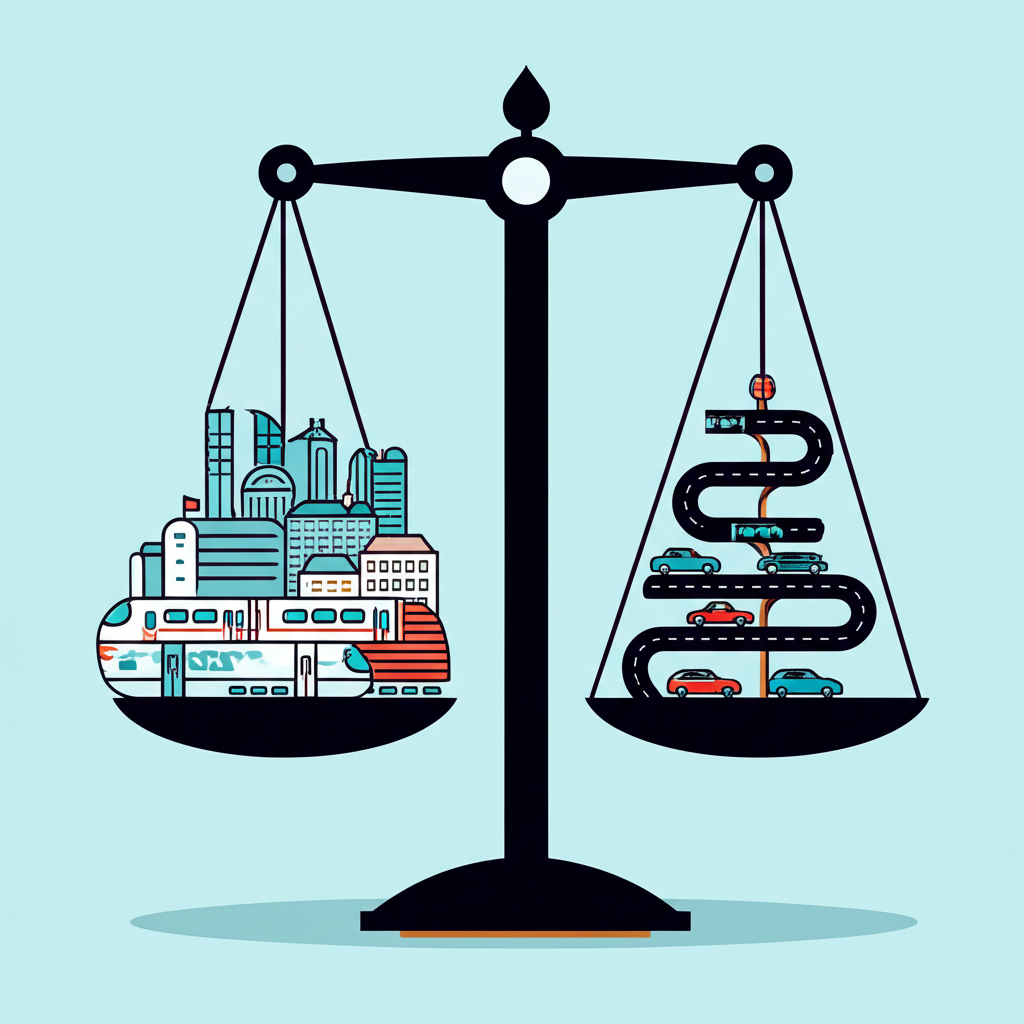The dream of living abroad often feels romantic and exciting. Imagine new cultures, different foods, and fresh experiences. However, the reality of moving presents unique challenges and benefits. We often romanticize life elsewhere; daily living, nevertheless, shows us the true picture.
Germany and the United States are both highly developed nations. They share advanced economies and modern infrastructure. Yet, their cultures, social structures, and daily rhythms differ greatly. This article provides an honest, no-holds-barred comparison. We will examine practical aspects of daily life, moving beyond common stereotypes. Ultimately, this guide helps potential expats, curious travelers, or anyone interested in cultural contrasts. For more insights into expat life, you might find valuable resources on platforms like Expatica.com.

Cost of Living: More Than Just Rent
Understanding money is crucial when moving abroad. Germany and the US, for instance, have very different economic setups, impacting your wallet in unique ways. Living costs are often the first thing people consider; however, these expenses go beyond just your monthly rent.
- Germany: Rent in smaller German cities generally costs less than in major US hubs. However, big cities like Munich or Berlin can be pricey. Food quality often seems higher for the price, especially fresh produce. Moreover, public transport is excellent, saving you money on car ownership. Yet, utilities, particularly heating in older buildings, can be quite high. For instance, a modest one-bedroom apartment in Berlin might cost around €1,200. Conversely, a similar place in New York City could easily exceed $3,000. Organic vegetables also often cost less in German supermarkets compared to their US counterparts.
- US: Rent varies dramatically across the US. New York City apartments are expensive, for example. In contrast, places in the Midwest offer much lower rents. Groceries can be cheaper, particularly processed or packaged foods. However, utility costs are often significant. Furthermore, car dependence adds huge expenses like gas, insurance, and maintenance. A gallon of milk might cost around $3.50-$4.00. Average gas prices can fluctuate; historically, however, they are lower than in Germany, yet still a major expense due to driving distances.
Salaries, Taxes, and Social Benefits
Salaries look different on paper in each country. What you take home after taxes, therefore, is key.
- Germany: Gross salaries are often lower than in the US. This happens due to higher taxes and substantial social contributions. These contributions, moreover, fund healthcare, pension, and unemployment benefits. Consequently, your net salary is smaller. However, these payments buy you an extensive social safety net. You get peace of mind knowing you are covered.
- US: Gross salaries can seem higher. Social contributions are generally lower here, for example. Many benefits, like healthcare and retirement, often rely on private plans or individual responsibility. This means more initial take-home pay. Yet, you carry more personal financial burden for future needs. Consider it a trade-off: higher taxes for collective peace of mind versus higher take-home pay with more individual financial responsibility.
Healthcare Systems: Public vs. Private
Healthcare systems represent a major point of difference. They profoundly shape daily life and future security. Access to medical care varies significantly. This, consequently, impacts everyone living in a country.
- Germany: Most people have mandatory public health insurance. This system provides universal access. Coverage is comprehensive, for example often including dental and vision. Out-of-pocket costs are low. Furthermore, the system emphasizes prevention. Appointments with specialists might involve longer wait times, however. From personal experience, navigating the German system felt reassuring. You know you’re covered, even for complex needs.
- US: Healthcare is primarily employer-sponsored or bought privately. High deductibles, co-pays, and out-of-pocket maximums are common. The system excels in emergency care. However, access often links directly to your employment or income. Therefore, the risk of high medical debt is a serious concern for many. The US system feels complex. Understanding your plan details is always crucial, consequently.
Social Safety Nets and Worker Rights
Beyond healthcare, both countries offer different levels of social support and worker protection.
- Germany: Worker protections are very strong. For instance, generous parental leave, up to three years per child (part-paid), is standard. Vacation days are ample, typically 25-30 days per year. Moreover, robust unemployment benefits, called Arbeitslosengeld, support those out of work. This system, furthermore, promotes a strong work-life balance and long-term financial security for many.
- US: Mandated worker protections are fewer. Parental leave often goes unpaid or varies greatly by state and company. Standard vacation days, moreover, are typically 10-15 per year. Unemployment benefits also vary by state and state and are often less comprehensive. Consequently, work-life balance and financial security depend more on individual company policies.
Daily Life and Culture: Beyond Stereotypes
Everyday routines feel quite different. Cultural norms, therefore, shape how people live.
Transportation: Cars vs. Public Transit
How you get around truly defines daily life. It also significantly impacts your budget.
- Germany: Public transportation is excellent. Trains, trams, and buses are extensive and reliable. You can easily live in most German cities without a car. Car ownership, conversely, proves expensive due to high gas prices, insurance, and parking costs. There’s also a strong emphasis on cycling. In fact, it’s incredibly easy to travel from one city to another by train.
- US: The US has a car-centric culture. Public transport, by contrast, is less developed outside major cities. Gas is cheaper (historically), and parking is usually ample. Long commutes are common, for example. Owning a car, therefore, is almost a necessity in most US regions, especially for suburban or rural living.
Food Culture and Dining
Food forms a big part of any culture. Eating habits, naturally, differ greatly between these countries.
- Germany: Germans emphasize fresh, regional ingredients. Traditional, hearty meals are common. Grocery stores have strict hours, moreover, often closing on Sundays. There’s a strong bread culture. Additionally, fewer “fast casual” dining options exist compared to the US. Meals are often a significant, slower event.
- US: The US boasts a wide variety of international cuisines. Portion sizes are generally larger, for instance. Convenience is key, with many 24/7 dining options readily available. Processed foods are widely accessible. Furthermore, tipping culture is deeply ingrained. Dining out offers immense convenience and variety.
Punctuality, Rules, and Social Interactions
Social norms shape how people interact daily. These can be subtle but impactful differences, moreover.
- Germany: Punctuality, efficiency, and adherence to rules are highly valued. For example, strict recycling guidelines, quiet hours in residential areas, and always waiting for the pedestrian signal to cross the street are common. Initial social interactions are more reserved. Once formed, however, friendships run deep. Communication is often direct, for instance.
- US: Americans have a more flexible approach to time. There’s an emphasis on individual freedom, within limits. Initial interactions are often more open and friendly. Nevertheless, forming deep bonds can be harder. Communication tends to be more indirect. Small talk is common, yet deep conversations may take longer to develop.

Education and Family Life
Raising a family or pursuing education presents different paths, both culturally and financially.
School Systems: From Kindergarten to University
Education systems significantly shape children’s futures and family finances.
- Germany: Public education is generally free, from kindergarten through university. This applies even to international students, for instance. Early tracking in secondary school sends students to different academic paths based on aptitude. The system, therefore, focuses on depth over breadth in subjects. Consequently, this greatly reduces the financial burden of higher education on families.
- US: The quality of public schools varies widely by district. Higher education is very expensive, featuring significant tuition fees. The curriculum is broader initially. Students, however, have more flexibility in university choices. Families often face substantial financial planning for college tuition, moreover.
Work-Life Balance and Raising Children
Parenting styles and work expectations also differ significantly between the two nations.
- Germany: There’s a strong emphasis on work-life balance. Shorter workweeks, typically 35-40 hours, are common. Generous parental leave, for instance, allows parents more time with young children. Children often play outdoors independently. Additionally, there is less pressure for highly structured activities.
- US: Longer working hours are common for many professionals. Less mandated leave, conversely, means parents often return to work sooner. Children often have more structured activities. Parenting can feel more “bubble-wrapped” with constant supervision, moreover. These differences profoundly impact daily family routines.
Conclusion
Neither Germany nor the US is inherently “better.” Each country offers distinct strengths and trade-offs. Germany, for example, provides stability, robust social safety nets, and efficiency. This, however, comes at the cost of higher taxes and potentially lower disposable income. The US, on the other hand, offers higher earning potential, individual freedom, and convenience. Yet, this often comes with greater personal financial responsibility and less comprehensive social safety.
Key Takeaways:
- Germany: Expect higher taxes for more social security, excellent public transport, strong worker rights, free higher education, and a focus on work-life balance.
- US: Experience higher gross salaries, more personal financial responsibility, a car-centric culture, diverse dining, and expensive higher education.
The “better” choice depends entirely on individual priorities. Your life stage and values, therefore, play a huge role. Do you prioritize a strong social safety net and collective well-being, even with higher taxes? Or, conversely, do you prefer more individual financial freedom and higher earning potential, accepting more personal risk? Reflect on what truly matters to you before making such a significant life decision.
FAQ
Here are some common questions people ask about living in Germany vs. the US:
Q1: Is it hard to move to Germany as an American?
A1: Moving to Germany can be challenging. It requires navigating visa processes, finding housing, and often learning German. However, many resources exist to help with this transition.
Q2: Which country has better job opportunities, Germany or the US?
A2: The “better” country depends on your specific field. For example, the US often has more high-paying tech jobs. Germany, conversely, boasts strong manufacturing and engineering sectors.
Q3: Is healthcare truly free in Germany?
A3: Healthcare in Germany is not “free.” Primarily, mandatory contributions from salaries fund the system. Most residents, however, have comprehensive public health insurance with very low out-of-pocket costs.
Q4: Can I live in Germany without speaking German?
A4: In major cities like Berlin or Munich, you can manage with English, especially among younger populations. Nevertheless, learning German is essential for daily life, integrating into society, and finding many jobs outside international companies.
Q5: What’s the biggest cultural shock for Americans in Germany?
A5: Many Americans find German directness and strict adherence to rules to be a cultural adjustment. For instance, strict recycling guidelines or quiet hours can be surprising. Sundays being quiet with closed shops can also be a surprise.
Q6: Is food cheaper in Germany or the US?
A6: Fresh, high-quality produce and basic groceries can often be more affordable in Germany. Processed and packaged foods, however, might be cheaper in the US, especially with frequent sales.
Q7: How different is the work-life balance?
A7: Germany generally prioritizes work-life balance more. Shorter workweeks, more vacation days, and generous parental leave are common benefits. Conversely, the US often has longer working hours and fewer mandated benefits.
Q8: Do I need a car in Germany?
A8: In most German cities, a car is not necessary. Public transportation is extensive and efficient, for example. In the US, however, a car is almost essential for most regions outside a few major cities.
Q9: Which country is better for raising children?
A9: Both countries offer good environments for raising children. Germany provides free education, strong social safety nets, and a culture encouraging outdoor play. The US, however, offers diverse opportunities but often requires more personal financial planning for education and healthcare. Ultimately, it truly depends on your family’s priorities.
Q10: Are taxes really that much higher in Germany?
A10: Yes, income taxes and social contributions are significantly higher in Germany. However, these contributions fund extensive public services like healthcare, education, and unemployment benefits. These benefits are generally not as comprehensively covered by taxes in the US.

